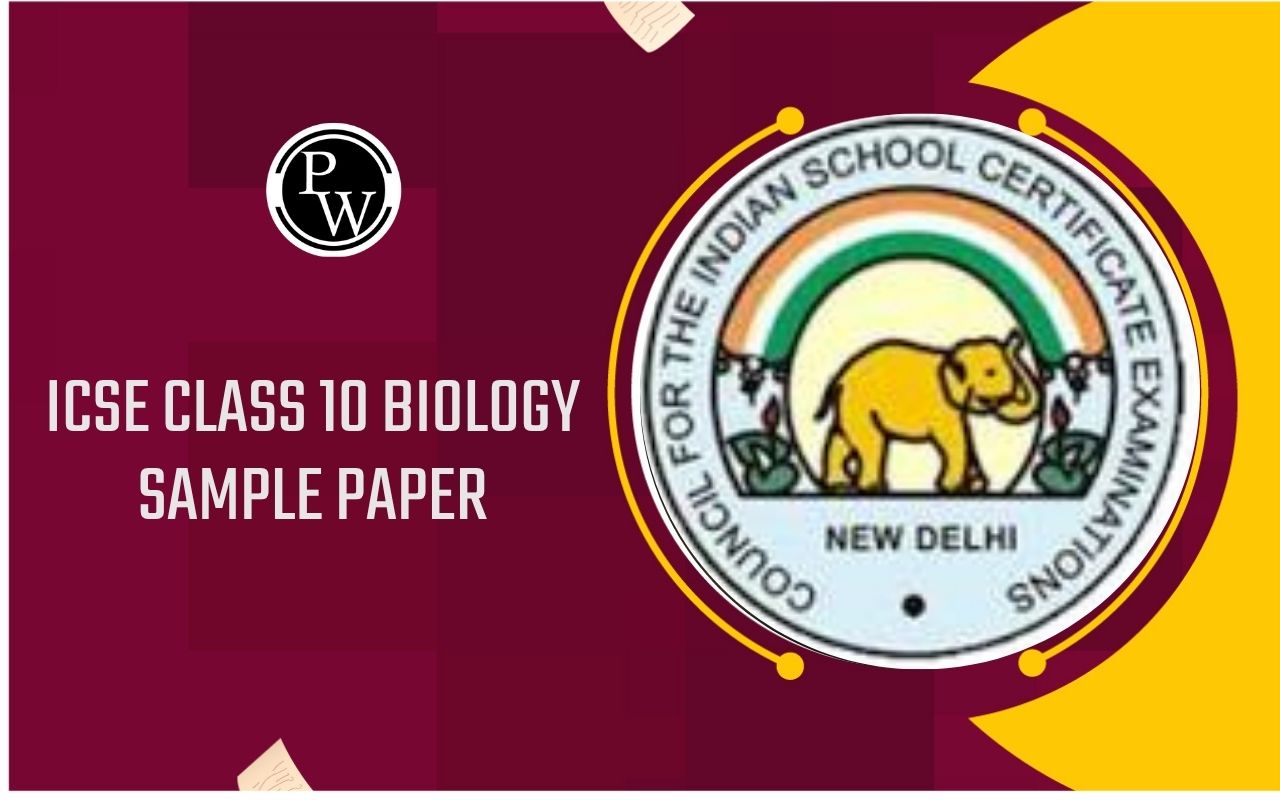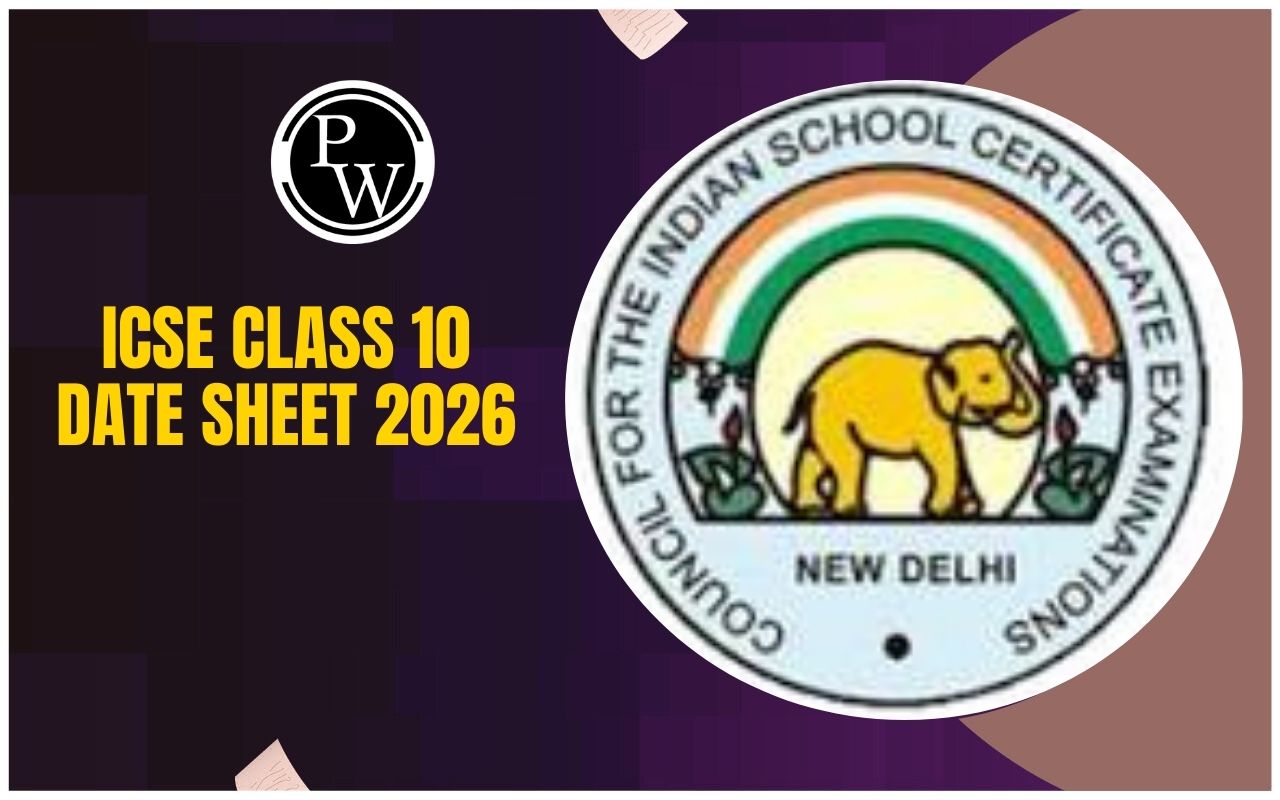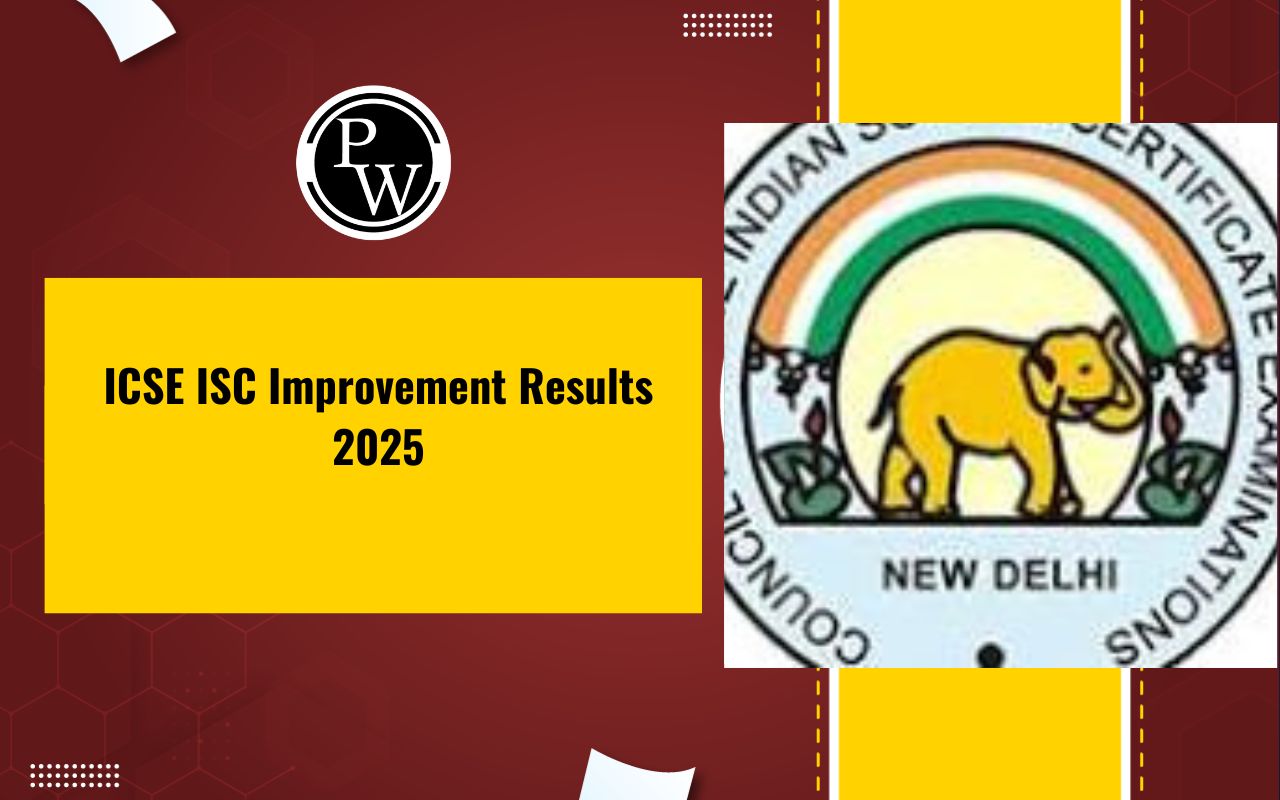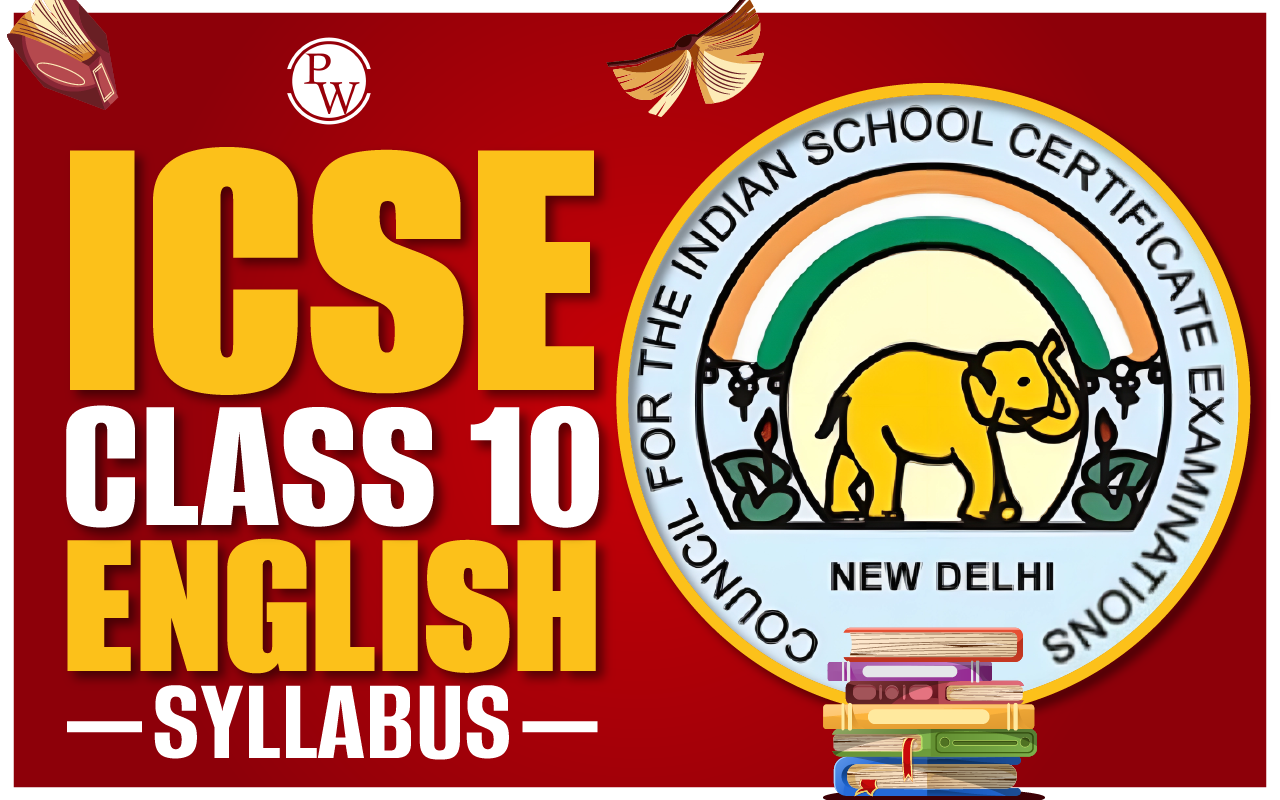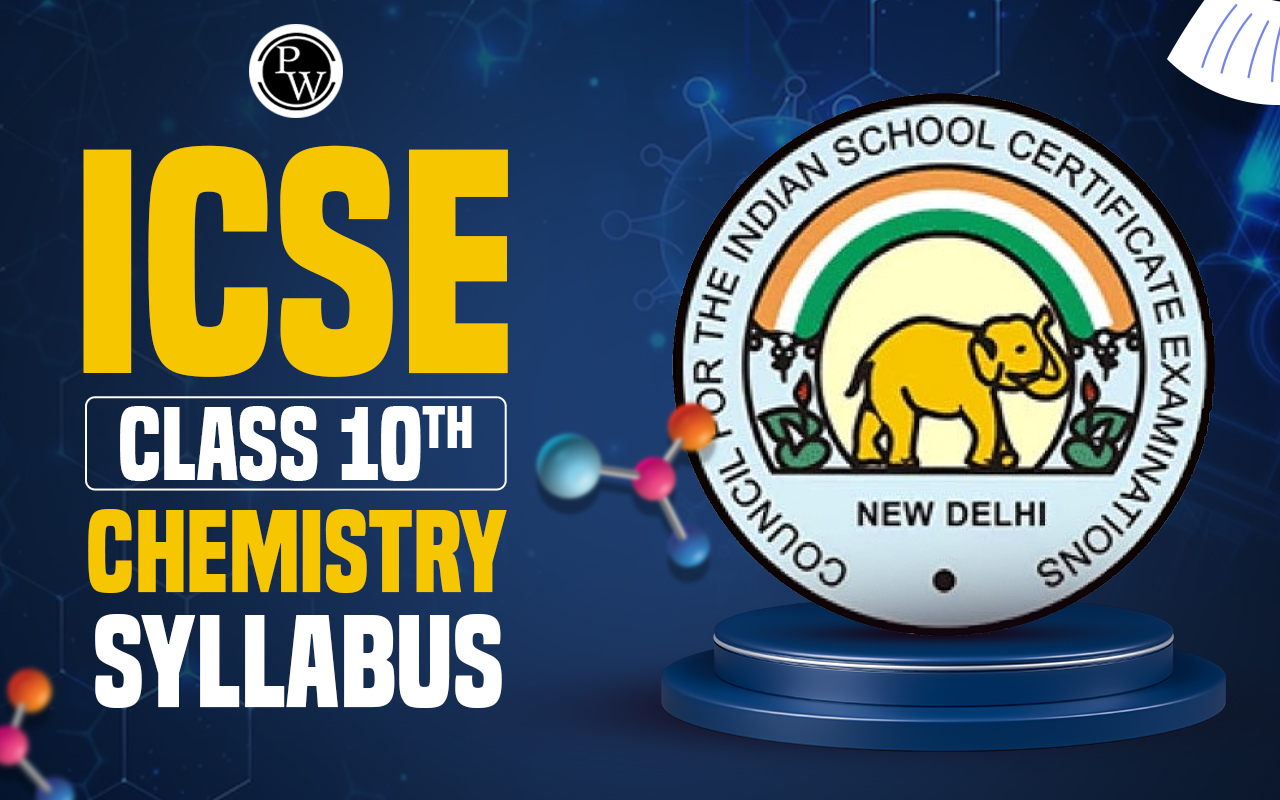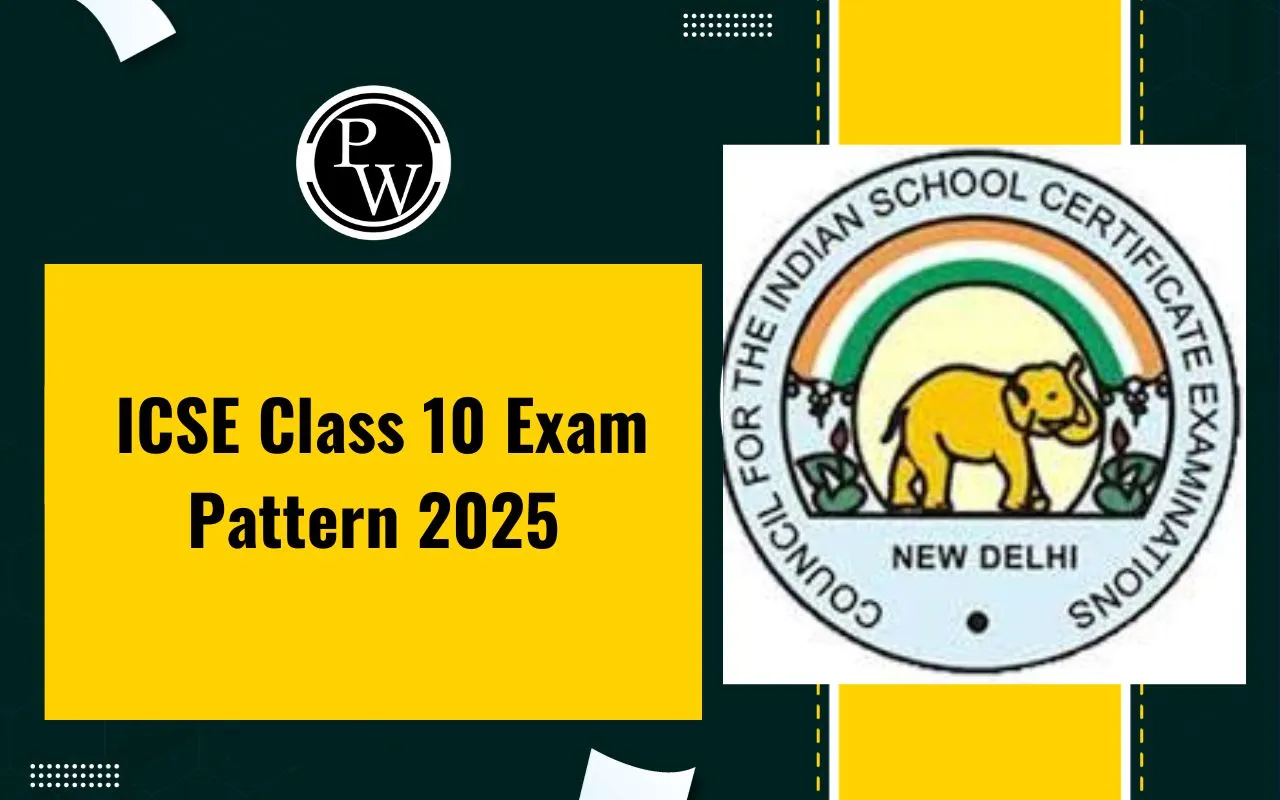
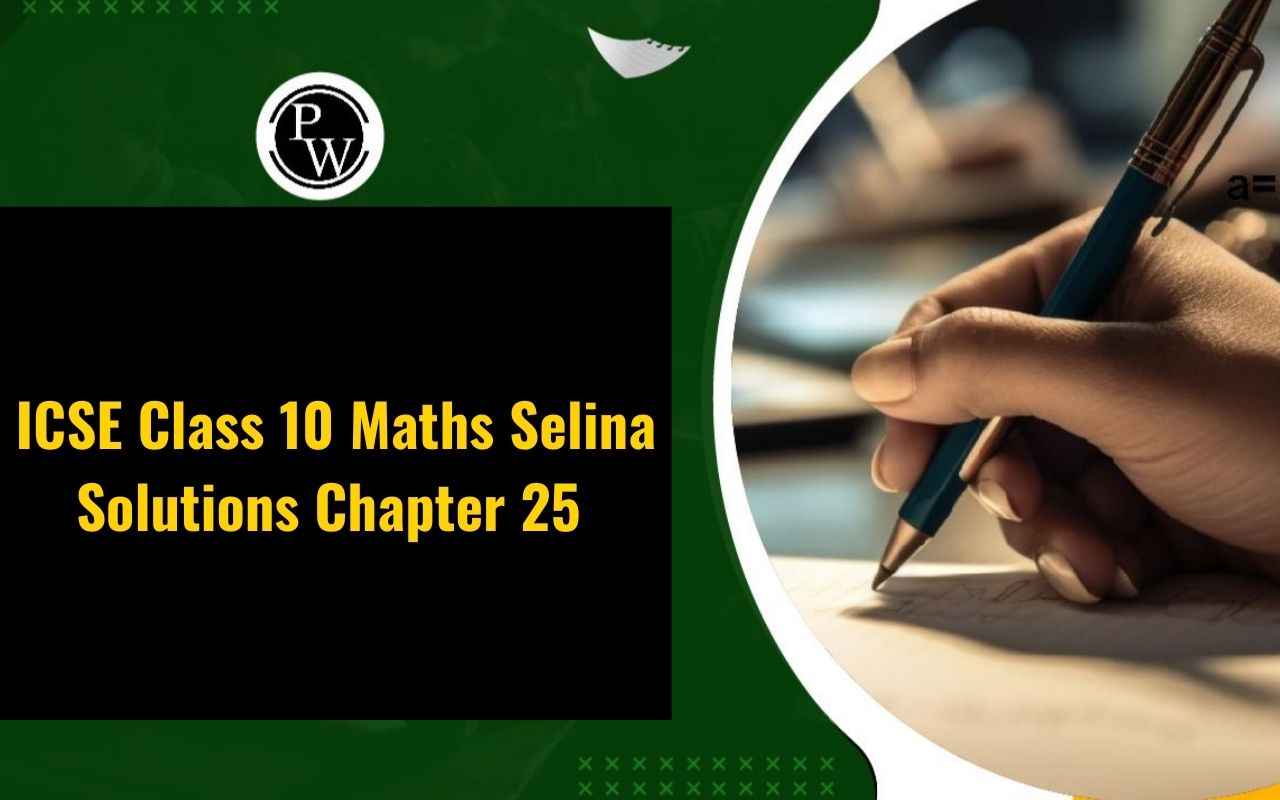
ICSE Class 10 Maths Selina Solutions Chapter 25: ICSE Class 10 Maths Selina Solutions Chapter 25 Probability provides detailed explanations and step-by-step solutions to the problems in the chapter.
This chapter covers important concepts of probability, including the calculation of the probability of events, understanding random experiments, and interpreting results. These solutions are designed to help students develop a clear understanding of probability, enhance their problem-solving skills, and prepare effectively for their exams.ICSE Class 10 Maths Selina Solutions Chapter 25 Probability Overview
These solutions, prepared by subject experts from Physics Wallah provide a thorough overview of ICSE Class 10 Maths Selina Solutions Chapter 25 Probability. With clear explanations and step-by-step solutions, these resources aim to enhance students understanding and problem-solving skills, helping them prepare effectively for their exams.ICSE Class 10 Maths Selina Solutions Chapter 25 Probability PDF
ICSE Class 10 Maths Selina Solutions Chapter 25 Probability
ICSE Class 10 Maths Selina Solutions Chapter 25 Exercise 25(A) Page No: 386
1. A coin is tossed once. Find the probability of:
(i) getting a tail
(ii) not getting a tail
Solution:
Here, the sample space = {H, T} i.e. n(S) = 2 (i) If A = Event of getting a tail = {T} Then, n(A) = 1 Hence, the probability of getting a tail = n(A)/ n(S) = 1/2 (ii) Not getting a tail As we know, P(getting a tail) + P(not getting a tail) = 1 So, P(not getting a tail) = 1 – (1/2) = ½2. A bag contains 3 white, 5 black and 2 red balls, all of the same shape and size. A ball is drawn from the bag without looking into it, find the probability that the ball drawn is:
(i) a black ball.
(ii) a red ball.
(iii) a white ball.
(iv) not a red ball.
(v) not a black ball.
Solution:
Total number of balls = 3 + 5 + 2 = 10 So, the total number of possible outcomes = 10 (i) There are 5 black balls So, the number of favourable outcomes = 5 Thus, P(getting a black ball) = 5/10 = 1/2 (ii) There are 2 red balls So, the number of favourable outcomes = 2 Thus, P(getting a red ball) = 2/10 = 1/5 (iii) There are 3 white balls So, the number of favourable outcomes = 3 Thus, P(getting a white ball) = 3/10 = 3/10 (iv) There are 3 + 5 = 8 balls which are not red So, the number of favourable outcomes = 8 Thus, P(getting a white ball) = 8/10 = 4/5 (v) There are 3 + 2 = 5 balls which are not black So, the number of favourable outcomes = 5 Thus, P(getting a white ball) = 5/10 = ½3. In a single throw of a die, find the probability of getting a number:
(i) greater than 4.
(ii) less than or equal to 4.
(iii) not greater than 4.
Solution:
Here, the sample space = {1, 2, 3, 4, 5, 6} So, n (s) = 6 (i) If E = event of getting a number greater than 4 = {5, 6} So, n (E) = 2 Then, probability of getting a number greater than 4 = n(E)/ n(s) = 2/6 = 1/3 (ii) If E = event of getting a number less than or equal to 4 = {1, 2, 3, 4} So, n (E) = 4 Then, probability of getting a number less than or equal to 4 = n(E)/ n(s) = 4/6 = 2/3 (iii) E = event of getting a number not greater than 4 = {1, 2, 3, 4} So, n (E) = 4 Then, probability of getting a number not greater than 4 = n(E)/ n(s ) = 4/6 = 2/34. In a single throw of a die, find the probability that the number:
(i) will be an even number.
(ii) will not be an even number.
(iii) will be an odd number.
Solution:
Here, the sample space = {1, 2, 3, 4, 5, 6} n(s) = 6 (i) If E = event of getting an even number = {2, 4, 6} n(E) = 3 Then, probability of a getting an even number = n(E)/ n(s) = 3/6 = ½ (ii) If E = event of not getting an even number = {1, 3, 5} n(E) = 3 Then, probability of a not getting an even number = n(E)/ n(s) = 3/6 = ½ (iii) If E = event of getting an odd number = {1, 3, 5} So, n(E) = 3 Then, probability of a getting an odd number = n(E)/ n(s) = 3/6 = ½5. From a well shuffled deck of 52 cards, one card is drawn. Find the probability that the card drawn will:
(i) be a black card.
(ii) not be a red card.
(iii) be a red card.
(iv) be a face card.
(v) be a face card of red colour.
Solution:
We know that, Total number of cards = 52 So, the total number of outcomes = 52 There are 13 cards of each type. The cards of heart and diamond are red in colour. Spade and diamond are black. Hence, there are 26 red cards and 26 black cards. (i) Number of black cards in a deck = 26 The number of favourable outcomes for the event of drawing a black card = 26 Then, probability of drawing a black card = 26/52 = ½ (ii) Number of red cards in a deck = 26 Therefore, number of non-red(black) cards = 52 – 26 = 26 The number of favourable outcomes for the event of not drawing a red card = 26 Then, probability of not drawing a red card = 26/52 = ½ (iii) Number of red cards in a deck = 26 The number of favourable outcomes for the event of drawing a red card = 26 Then, probability of drawing a red card = 26/52 = ½ (iv) There are 52 cards in a deck of cards, and 12 of these cards are face cards (4 kings, 4 queens and 4 jacks). The number of favourable outcomes for the event of drawing a face card = 12 Then, probability of drawing a face card = 12/52 = 3/13 (v) There are 26 red cards in a deck, and 6 of these cards are face cards (2 kings, 2 queens and 2 jacks). The number of favourable outcomes for the event of drawing a face card of red color = 6 Then, probability of drawing a red face card = 6/52 = 3/266. (i) If A and B are two complementary events then what is the relation between P(A) and P(B)?
(ii) If the probability of happening an event A is 0.46. What will be the probability of not happening of the event A?
Solution:
(i) Two complementary events, taken together, include all the outcomes for an experiment and the sum of the probabilities of all outcomes is 1. P(A) + P(B) = 1 (ii) P(A) = 0.46 Let P(B) be the probability of not happening of event A Then we know that, P(A) + P(B) = 1 P(B) = 1 – P(A) P(B) = 1 – 0.46 P(B) = 0.54 Thus, the probability of not happening of event A is 0.547. In a T.T. match between Geeta and Ritu, the probability of the winning of Ritu is 0.73. Find the probability of:
(i) winning of Geeta
(ii) not winning of Ritu
Solution:
(i) Winning of Geeta is a complementary event to winning of Ritu Thus, P(winning of Ritu) + P(winning of Geeta) = 1 P(winning of Geeta) = 1 – P(winning of Ritu) P(winning of Geeta) = 1 – 0.73 P(winning of Geeta) = 0.27 (ii) Not winning of Ritu is a complementary event to winning of Ritu Thus, P(winning of Ritu) + P(not winning of Ritu) = 1 P(not winning of Ritu) = 1 – P(winning of Ritu) P(not winning of Ritu) = 1 – 0.73 P(not winning of Ritu) = 0.27ICSE Class 10 Maths Selina Solutions Chapter 25 Exercise 25(B) Page No: 393
1. Nine cards (identical in all respects) are numbered 2 to 10. A card is selected from them at random. Find the probability that the card selected will be:
(i) an even number
(ii) a multiple of 3
(iii) an even number and a multiple of 3
(iv) an even number or a multiple of 3
Solution:
We know that, there are totally 9 cards from which one card is drawn. Total number of elementary events = n(S) = 9 (i) From numbers 2 to 10, there are 5 even numbers i.e. 2, 4, 6, 8, 10 So, favorable number of events = n(E) = 5 Hence, probability of selecting a card with an even number = n(E)/ n(S) = 5/9 (ii) From numbers 2 to 10, there are 3 numbers which are multiples of 3 i.e. 3, 6, 9 So, favorable number of events = n(E) = 3 Hence, probability of selecting a card with a multiple of 3= n(E)/ n(S) = 3/9 = 1/3 (iii) From numbers 2 to 10, there is one number which is an even number as well as multiple of 3 i.e. 6 So, favorable number of events = n(E) = 1 Hence, probability of selecting a card with a number which is an even number as well as multiple of 3 = n(E)/ n(S) = 1/9 (iv) From numbers 2 to 10, there are 7 numbers which are even numbers or a multiple of 3 i.e. 2, 3, 4, 6, 8, 9, 10 So, favorable number of events = n(E) = 7 Hence, probability of selecting a card with a number which is an even number or a multiple of 3 = n(E)/ n(S) = 7/92. Hundred identical cards are numbered from 1 to 100. The cards The cards are well shuffled and then a card is drawn. Find the probability that the number on card drawn is:
(i) a multiple of 5
(ii) a multiple of 6
(iii) between 40 and 60
(iv) greater than 85
(v) less than 48
Solution:
We kwon that, there are 100 cards from which one card is drawn. Total number of elementary events = n(S) = 100 (i) From numbers 1 to 100, there are 20 numbers which are multiple of 5 i.e. {5, 10, 15, 20, 25, 30, 35, 40, 45, 50, 55, 60, 65, 70, 75, 80, 85, 90, 95, 100} So, favorable number of events = n(E) = 20 Hence, probability of selecting a card with a multiple of 5 = n(E)/ n(S) = 20/ 100 = 1/5 (ii) From numbers 1 to 100, there are 16 numbers which are multiple of 6 i.e. {6, 12, 18, 24, 30, 36, 42, 48, 54, 60, 66, 72, 78, 84, 90, 96} So, favorable number of events = n(E) = 16 Hence, probability of selecting a card with a multiple of 6 = n(E)/ n(S) = 16/ 100 = 4/25 (iii) From numbers 1 to 100, there are 19 numbers which are between 40 and 60 i.e. {41, 42, 43, 44, 45, 46, 47, 48, 49, 50, 51, 52, 53, 54, 55, 56, 57, 58, 59} So, favorable number of events = n(E) = 19 Hence, probability of selecting a card between 40 and 60 = n(E)/ n(S) = 19/100 (iv) From numbers 1 to 100, there are 15 numbers which are greater than 85 i.e. {86, 87, …., 98, 99, 100} So, favorable number of events = n(E) = 15 Hence, probability of selecting a card with a number greater than 85 = n(E)/ n(S) = 15/100 = 3/20 (v) From numbers 1 to 100, there are 47 numbers which are less than 48 i.e. {1, 2, ……….., 46, 47} So, favorable number of events = n(E) = 47 Hence, probability of selecting a card with a number less than 48 = n(E)/ n(S) = 47/1003. From 25 identical cards, numbered 1, 2, 3, 4, 5, ……, 24, 25: one card is drawn at random. Find the probability that the number on the card drawn is a multiple of:
(i) 3
(ii) 5
(iii) 3 and 5
(iv) 3 or 5
Solution:
We know that, there are 25 cards from which one card is drawn. So, the total number of elementary events = n(S) = 25 (i) From numbers 1 to 25, there are 8 numbers which are multiple of 3 i.e. {3, 6, 9, 12, 15, 18, 21, 24} So, favorable number of events = n(E) = 8 Hence, probability of selecting a card with a multiple of 3 = n(E)/ n(S) = 8/25 (ii) From numbers 1 to 25, there are 5 numbers which are multiple of 5 i.e. {5, 10, 15, 20, 25} So, favorable number of events = n(E) = 5 Hence, probability of selecting a card with a multiple of 5 = n(E)/ n(S) = 5/25 = 1/5 (iii) From numbers 1 to 25, there is only one number which is multiple of 3 and 5 i.e. {15} So, favorable number of events = n(E) = 1 Hence, probability of selecting a card with a multiple of 3 and 5 = n(E)/ n(S) = 1/25 (iv) From numbers 1 to 25, there are 12 numbers which are multiple of 3 or 5 i.e. {3, 5, 6, 9, 10, 12, 15, 18, 20, 21, 24, 25} So, favorable number of events = n(E) = 12 Hence, probability of selecting a card with a multiple of 3 or 5 = n(E)/ n(S) = 12/254. A die is thrown once. Find the probability of getting a number:
(i) less than 3
(ii) greater than or equal to 4
(iii) less than 8
(iv) greater than 6
Solution:
We know that, In throwing a dice, total possible outcomes = {1, 2, 3, 4, 5, 6} So, n(S) = 6 (i) On a dice, numbers less than 3 = {1, 2} So, n(E) = 2 Hence, probability of getting a number less than 3 = n(E)/ n(S) = 2/6 = 1/3 (ii) On a dice, numbers greater than or equal to 4 = {4, 5, 6} So, n(E) = 3 Hence, probability of getting a number greater than or equal to 4 = n(E)/ n(S) = 3/6 = 1/2 (iii) On a dice, numbers less than 8 = {1, 2, 3, 4, 5, 6} So, n(E) = 6 Hence, probability of getting a number less than 8 = n(E)/ n(S) = 6/6 = 1 (iv) On a dice, numbers greater than 6 = 0 So, n(E) = 0 Hence, probability of getting a number greater than 6 = n(E)/ n(S) = 0/6 = 05. A book contains 85 pages. A page is chosen at random. What is the probability that the sum of the digits on the page is 8?
Solution:
We know that, Number of pages in the book = 85 Number of possible outcomes = n(S) = 85 Out of 85 pages, pages that sum up to 8 = {8, 17, 26, 35, 44, 53, 62, 71, 80} So, pages that sum up to 8 = n(E) = 9 Hence, probability of choosing a page with the sum of digits on the page equals 8 = n(E)/ n(S) = 9/856. A pair of dice is thrown. Find the probability of getting a sum of 10 or more, if 5 appears on the first die.
Solution:
In throwing a dice, total possible outcomes = {1, 2, 3, 4, 5, 6} So, n(S) = 6 For two dice, n(S) = 6 x 6 = 36 Favorable cases where the sum is 10 or more with 5 on 1 st die = {(5, 5), (5, 6)} Event of getting the sum is 10 or more with 5 on 1 st die = n(E) = 2 Hence, the probability of getting a sum of 10 or more with 5 on 1 st die = n(E)/ n(S) = 2/ 36 = 1/187. If two coins are tossed once, what is the probability of getting:
(i) both heads.
(ii) at least one head.
(iii) both heads or both tails.
Solution:
We know that, when two coins are tossed together possible number of outcomes = {HH, TH, HT, TT} So, n(S) = 4 (i) E = event of getting both heads = {HH} n(E) = 1 Hence, probability of getting both heads = n(E)/ n(S) = ¼ (ii) E = event of getting at least one head = {HH, TH, HT} n(E) = 3 Hence, probability of getting at least one head = n(E)/ n(S) = ¾ (iii) E = event of getting both heads or both tails = {HH, TT} n(E) = 2 Hence, probability of getting both heads or both tails = n(E)/ n(S) = 2/4 = ½ICSE Class 10 Maths Selina Solutions Chapter 25 Exercise 25(C) Page No: 394
1. A bag contains 3 red balls, 4 blue balls and 1 yellow ball, all the balls being identical in shape and size. If a ball is taken out of the bag without looking into it; find the probability that the ball is:
(i) yellow
(ii) red
(iii) not yellow
(iv) neither yellow nor red
Solution:
The total number of balls in the bag = 3 + 4 + 1 = 8 balls So, the number of possible outcomes = 8 = n(S) (i) Event of drawing a yellow ball = {Y} So, n(E) = 1 Thus, probability of drawing a yellow ball = n(E)/ n(S) = 1/8 (ii) Event of drawing a red ball = {R, R, R} So, n(E) = 3 Thus, probability of drawing a red ball = n(E)/ n(S) = 3/8 (iii) Probability of not drawing a yellow ball = 1 – Probability of drawing a yellow ball Thus, probability of not drawing a yellow ball = 1 – 1/8 = (8 – 1)/ 8 = 7/8 (iv) Neither yellow ball nor red ball means a blue ball Event of not drawing a yellow or red ball = E = 4 So, n(E) = 4 Thus, probability of not drawing a yellow or red ball = n(E)/ n(S) = 4/8 = 1/22. A dice is thrown once. What is the probability of getting a number:
(i) greater than 2?
(ii) less than or equal to 2?
Solution:
The number of possible outcomes when dice is thrown = {1, 2, 3, 4, 5, 6} So, n(S) = 6 (i) Event of getting a number greater than 2 = E = {3, 4, 5, 6} So, n(E) = 4 Thus, probability of getting a number greater than 2 = n(E)/ n(S) = 4/6 = 2/3 (ii) Event of getting a number less than or equal to 2 = E = {1, 2} So, n(E) = 2 Thus, probability of getting a number less than or equal to 2 = n(E)/ n(S) = 2/6 = 1/33. From a well shuffled deck of 52 cards, one card is drawn. Find the probability that the card drawn is:
(i) a face card
(ii) not a face card
(iii) a queen of black card
(iv) a card with number 5 or 6
(v) a card with number less than 8
(vi) a card with number between 2 and 9
Solution:
We have, the total number of possible outcomes = 52 So, n(S) = 52 (i) No. of face cards in a deck of 52 cards = 12 (4 kings, 4 queens and 4 jacks) Event of drawing a face cards = E = (4 kings, 4 queens and 4 jacks) So, n(E) = 12 Thus, probability of drawing a face card = n(E)/ n(S) = 12/52 = 3/13 (ii) Probability of not drawing a face card = 1 – probability of drawing a face card Thus, probability of not drawing a face card = 1 – 3/13 = (13 – 3)/ 13 = 10/13 (iii) Event of drawing a queen of black colour = {Q(spade), Q(club)} = E So, n(E) = 2 Thus, probability of drawing a queen of black colour = n(E)/ n(S) = 2/52 = 1/26 (iv) Event of drawing a card with number 5 or 6 = E = {5H, 5D, 5S, 5C, 6H, 6D, 6S, 6C} So, n(E) = 8 Thus, probability of drawing a card with number 5 or 6 = n(E)/ n(S) = 8/52 = 2/13 (v) Numbers less than 8 = { 2, 3, 4, 5, 6, 7} Event of drawing a card with number less than 8 = E = {6H cards, 6D cards, 6S cards, 6C cards} So, n(E) = 24 Thus, probability of drawing a card with number less than 8 = n(E)/ n(S) = 24/52 = 6/13 (vi) Number between 2 and 9 = {3, 4, 5, 6, 7, 8} Event of drawing a card with number between 2 and 9 = E = {6H cards, 6D cards, 6S cards, 6C cards} So, n(E) = 24 Thus, probability of drawing a card with number between 2 and 9 = n(E)/ n(S) = 24/52 = 6/134. In a match between A and B:
(i) the probability of winning of A is 0.83. What is the probability of winning of B?
(ii) the probability of losing the match is 0.49 for B. What is the probability of winning of A?
Solution:
(i) We know that, The probability of winning of A + Probability of losing of A = 1 And, Probability of losing of A = Probability of winning of B Therefore, Probability of winning of A + Probability of winning of B = 1 0.83 + Probability of winning of B = 1 Hence, probability of winning of B = 1 – 0.83 = 0.17 (ii) We know that, Probability of winning of B + Probability of losing of B = 1 And, probability of losing of B = Probability of winning of A Therefore, Probability of winning of A = 0.495. A and B are friends. Ignoring the leap year, find the probability that both friends will have:
(i) different birthdays?
(ii) the same birthday?
Solution:
Out of the two friends, A’s birthday can be any day of the year. Now, B’s birthday can also be any day of 365 days in the year. We assume that these 365 outcomes are equally likely. So, (i) If A’s birthday is different from B’s, the number of favourable outcomes for his birthday is 365 – 1 = 364 Hence, P (A’s birthday is different from B’s birthday) = 364/365 (ii) P (A and B have the same birthday) = 1 – P (both have different birthdays) = 1 – 364/365 [As P (E’) = 1 – P(E)] = 1/ 3656. A man tosses two different coins (one of Rs 2 and another of Rs 5) simultaneously. What is the probability that he gets:
(i) at least one head?
(ii) at most one head?
Solution:
We know that, When two coins are tossed simultaneously, the possible outcomes are {(H, H), (H, T), (T, H), (T, T)} So, n(S) = 4 (i) The outcomes favourable to the event E, ‘at least one head’ are {(H, H), (H, T), (T, H)} So, the number of outcomes favourable to E is 3 = n(E) Hence, P(E) = n(E)/ n(S) = ¾ (ii) The outcomes favourable to the event E, ‘at most one head’ are {(T, H), (H, T), (T, T)} So, the number of outcomes favourable to E is 3 = n(E) Hence, P(E) = n(E)/ n(S) = 3/47. A box contains 7 red balls, 8 green balls and 5 white balls. A ball is drawn at random from the box. Find the probability that the ball is:
(i) white
(ii) neither red nor white.
Solution:
We have, Total number of balls in the box = 7 + 8 + 5 = 20 balls Total possible outcomes = 20 = n(S) (i) Event of drawing a white ball = E = number of white balls = 5 So, n(E) = 5 Hence, probability of drawing a white ball = n(E)/ n(S) = 5/20 = 1/4 (ii) Neither red ball nor white ball = green ball Event of not drawing a red or white ball = E = number of green ball = 8 So, n(E) = 8 Hence, probability of drawing a white ball = n(E)/ n(S) = 8/20 = 2/58. All the three face cards of spades are removed from a well shuffled pack of 52 cards. A card is then drawn at random from the remaining pack. Find the probability of getting:
(i) a black face card
(ii) a queen
(iii) a black card
Solution:
We have, Total number of cards = 52 If 3 face cards of spades are removed Then, the remaining cards = 52 – 3 = 49 = number of possible outcomes So, n(S) = 49 (i) Number of black face cards left = 3 face cards of club Event of drawing a black face card = E = 3 So, n(E) = 3 Hence, probability of drawing a black face card = n(E)/ n(S) = 3/49 (ii) Number of queen cards left = 3 Event of drawing a black face card = E = 3 So, n(E) = 3 Hence, probability of drawing a queen card = n(E)/ n(S) = 3/49 (iii) Number of black cards left = 23 cards (13 club + 10 spade) Event of drawing a black card = E = 23 So, n(E) = 23 Hence, probability of drawing a black card = n(E)/ n(S) = 23/499. In a musical chairs game, a person has been advised to stop playing the music at any time within 40 seconds after its start. What is the probability that the music will stop within the first 15 seconds?
Solution:
Total result = 0 sec to 40 sec Total possible outcomes = 40 So, n(S) = 40 Favourable results = 0 sec to 15 sec Favourable outcomes = 15 So, n(E) = 15 Hence, the probability that the music will stop in first 15 sec = n(E)/ n(S) = 15/40 = 3/810. In a bundle of 50 shirts, 44 are good, 4 have minor defects and 2 have major defects. What is the probability that:
(i) it is acceptable to a trader who accepts only a good shirt?
(ii) it is acceptable to a trader who rejects only a shirt with major defects?
Solution:
We have, Total number of shirts = 50 Total number of elementary events = 50 = n(S) (i) As, trader accepts only good shirts and number of good shirts = 44 Event of accepting good shirts = 44 = n(E) Probability of accepting a good shirt = n(E)/ n(S) = 44/50 = 22/25 (ii) As, trader rejects shirts with major defects only and number of shirts with major defects = 2 Event of accepting shirts = 50 – 2 = 48 = n(E) Probability of accepting shirts = n(E)/ n(S) = 48/50 = 24/2511. Two dice are thrown at the same time. Find the probability that the sum of the two numbers appearing on the top of the dice is:
(i) 8
(ii) 13
(iii) less than or equal to 12
Solution:
We have, the number of possible outcomes = 6 × 6 = 36. (i) The outcomes favourable to the event ‘the sum of the two numbers is 8’ = E = {(2, 6), (3, 5), (4, 4), (5, 3), (6, 2)} The number of outcomes favourable to E = n(E) = 5. Thus, P(E) = n(E)/ n(S) = 5/36 (ii) There is no outcome favourable to the event E = ‘the sum of two numbers is 13’. So, n(E) = 0 Thus, P(E) = n(E)/ n(S) = 0/36 = 0 (iii) All the outcomes are favourable to the event E = ‘sum of two numbers ≤ 12’. Thus, P(E) = n(E)/ n(S) = 36/36 = 112. Which of the following cannot be the probability of an event?
(i) 3/7
(ii) 0.82
(iii) 37%
(iv) -2.4
Solution:
We know that probability of an event E is 0 ≤ P(E) ≤ 1 (i) As 0 ≤ 3/7 ≤ 1 Thus, 3/7 can be a probability of an event. (ii) As 0 ≤ 0.82 ≤ 1 Thus, 0.82 can be a probability of an event. (iii) As 0 ≤ 37 % = (37/100) ≤ 1 Thus, 37 % can be a probability of an event. (iv) As -2.4 < 0 Thus, -2.4 cannot be a probability of an event.13. If P(E) = 0.59; find P(not E)
Solution:
We know that, P(E) + P(not E) = 1 So, 0.59 + P(not E) = 1 Hence, P(not E) = 1 – 0.59 = 0.4114. A bag contains a certain number of red balls. A ball is drawn. Find the probability that the ball drawn is:
(i) black
(ii) red
Solution:
We have, Total possible outcomes = number of red balls. (i) Number of favourable outcomes for black balls = 0 Hence, P(black ball) = 0 (ii) Number of favourable outcomes for red balls = number of red balls Hence, P(red ball) =
Hence, P(red ball) =
15. The probability that two boys do not have the same birthday is 0.897. What is the probability that the two boys have the same birthday?
Solution:
We know that, P(do not have the same birthday) + P(have same birthday) = 1 0.897 + P(have same birthday) = 1 Thus, P(have same birthday) = 1 – 0.897 P(have same birthday) = 0.10316. A bag contains 10 red balls, 16 white balls and 8 green balls. A ball is drawn out of the bag at random. What is the probability that the ball drawn will be:
(i) not red?
(ii) neither red nor green?
(iii) white or green?
Solution:
Total number of possible outcomes = 10 + 16 + 8 = 34 balls So, n(S) = 34 (i) Favorable outcomes for not a red ball = favorable outcomes for white or green ball So, number of favorable outcomes for white or green ball = 16 + 8 =24 = n(E) Hence, probability for not drawing a red ball = n(E)/ n(S) = 24/34 = 12/17 (ii) Favorable outcomes for neither a red nor a green ball = favorable outcomes for white ball So, the number of favorable outcomes for white ball = 16 = n(E) Hence, probability for not drawing a red or green ball = n(E)/ n(S) = 16/34 = 8/17 (iii) Number of favorable outcomes for white or green ball = 16 + 8 = 24 = n(E) Hence, probability for drawing a white or green ball = n(E)/ n(S) = 24/34 = 12/1717. A bag contains twenty Rs 5 coins, fifty Rs 2 coins and thirty Re 1 coins. If it is equally likely that one of the coins will fall down when the bag is turned upside down, what is the probability that the coin:
(i) will be a Re 1 coin?
(ii) will not be a Rs 2 coin?
(iii) will neither be a Rs 5 coin nor be a Re 1 coin?
Solution:
We have, Total number of coins = 20 + 50 + 30 = 100 So, the total possible outcomes = 100 = n(S) (i) Number of favourable outcomes for Re 1 coins = 30 = n(E) Probability (Re 1 coin) = n(E)/ n(S) = 30/100 = 3/10 (ii) Number of favourable outcomes for not a Rs 2 coins = number of favourable outcomes for Re 1 or Rs 5 coins = 30 + 20 = 50 = n(E) Hence, probability (not Rs 2 coin) = n(E)/ n(S) = ½ (iii) Number of favourable outcomes for neither Re 1 nor Rs 5 coins = Number of favourable outcomes for Rs 2 coins = 50 = n(E) Hence, probability (neither Re 1 nor Rs 5 coin) = n(E)/ n(S) = 50/100 = 1/218. A game consists of spinning arrow which comes to rest pointing at one of the numbers 1, 2, 3, 4, 5, 6, 7, 8, 9, 10, 11, 12; as shown below.

If the outcomes are equally likely, find the probability that the pointer will point at:
(i) 6 (iv) a number greater than 8
(ii) an even number (v) a number less than or equal to 9
(iii) a prime number (vi) a number between 3 and 11
Solution:
We have, Total number of possible outcomes = 12 (i) Number of favorable outcomes for 6 = 1 Hence, P(the pointer will point at 6) = 1/12 (ii) Favorable outcomes for an even number are 2, 4, 6, 8, 10, 12 So, number of favorable outcomes = 6 Hence, P(the pointer will be at an even number) = 6/12 = ½ (iii) Favorable outcomes for a prime number are 2, 3, 5, 7, 11 So, number of favorable outcomes = 5 Hence, P(the pointer will be at a prime number) = 5/12 (iv) Favorable outcomes for a number greater than 8 are 9, 10, 11, 12 So, number of favorable outcomes = 4 Hence, P(the pointer will be at a number greater than 8) = 4/12 = 1/3 (v) Favorable outcomes for a number less than or equal to 9 are 1, 2, 3, 4, 5, 6, 7, 8, 9 So, number of favorable outcomes = 9 Hence, P(the pointer will be at a number less than or equal to 9) = 9/12 = 3/4 (vi) Favorable outcomes for a number between 3 and 11 are 4, 5, 6, 7, 8, 9, 10 So. number of favorable outcomes = 7 Hence, P(the pointer will be at a number between 3 and 11) = 7/1219. One card is drawn from a well shuffled deck of 52 cards. Find the probability of getting:
(i) a queen of red color
(ii) a black face card
(iii) the jack or the queen of the hearts
(iv) a diamond
(v) a diamond or a spade
Solution:
We have, Total possible outcomes = 52 (i) Number queens of red color = 2 Number of favorable outcomes = 2 Hence, P(queen of red color) = 2/52 (ii) Number of black cards = 26 Number of black face cards = 6 So, the number of favorable outcomes = 6 Hence, P(black face card) = 6/52 = 3/26 (iii) Favorable outcomes for jack or queen of hearts = 1 jack + 1 queen So, the number of favorable outcomes = 2 Hence, P(jack or queen of hearts) = 2/52 = 1/26 (iv) Number of favorable outcomes for a diamond = 13 So, number of favorable outcomes = 13 Hence, P(getting a diamond) = 13/52 = ¼ (v) Number of favorable outcomes for a diamond or a spade = 13 + 13 = 26 So, number of favorable outcomes = 26 Hence, P(getting a diamond or a spade) = 26/52 = 1/2Benefits of ICSE Class 10 Maths Selina Solutions Chapter 25
ICSE Class 10 Maths Selina Solutions Chapter 25 FAQs
What is Probability?
What is a Probability Distribution?
What is the Sum of Probabilities of All Possible Outcomes?
What is Conditional Probability?




